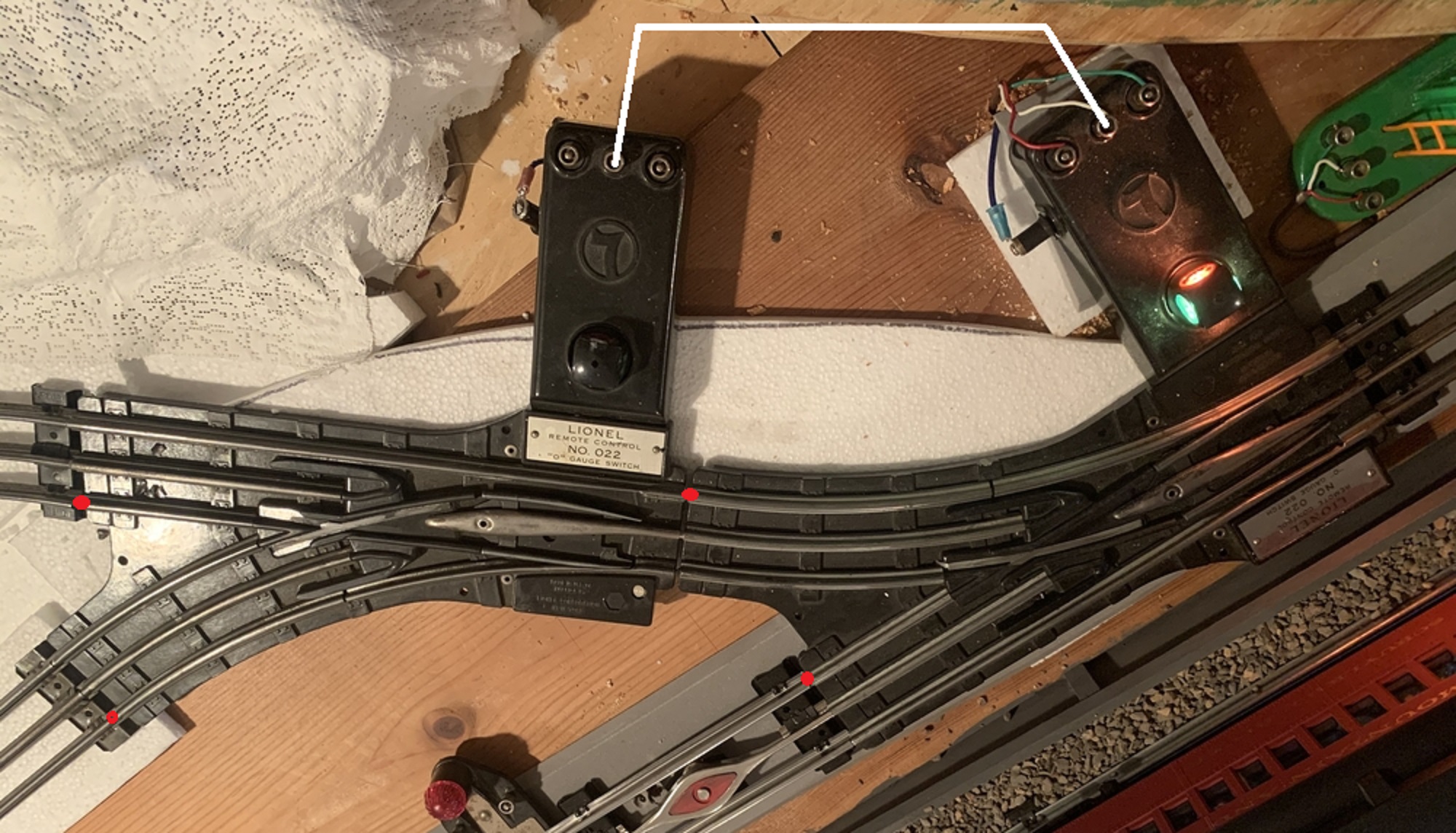 Ok, brain trust, not a normal issue here. Is there something I need to do to isolate or power a rail separately to make this switch combination work? Both switches work individually, but when connected like this.... see pic..... They don’t work. One will stay thrown in one direction and if try to change it’ll buzz and throw itself back. The other won’t do anything but light the lamp. Data: both powered by 18v to the constant power pin. Both switch throw remote switches verified operational on other switches. I’ve tried isolation pins on different rails, lock ons on the 2 rails leading away..... and like I said they work fine individually. This ones driving me nuts, and it’s the last bit of wiring and track work I need to figure out. I’ve been using it manually by just turning the lamp but it would be nice if the darn thing would work. Thanks in advance for helping with my mystery!
Ok, brain trust, not a normal issue here. Is there something I need to do to isolate or power a rail separately to make this switch combination work? Both switches work individually, but when connected like this.... see pic..... They don’t work. One will stay thrown in one direction and if try to change it’ll buzz and throw itself back. The other won’t do anything but light the lamp. Data: both powered by 18v to the constant power pin. Both switch throw remote switches verified operational on other switches. I’ve tried isolation pins on different rails, lock ons on the 2 rails leading away..... and like I said they work fine individually. This ones driving me nuts, and it’s the last bit of wiring and track work I need to figure out. I’ve been using it manually by just turning the lamp but it would be nice if the darn thing would work. Thanks in advance for helping with my mystery!
note: switch is obviously powered down in the pic.













